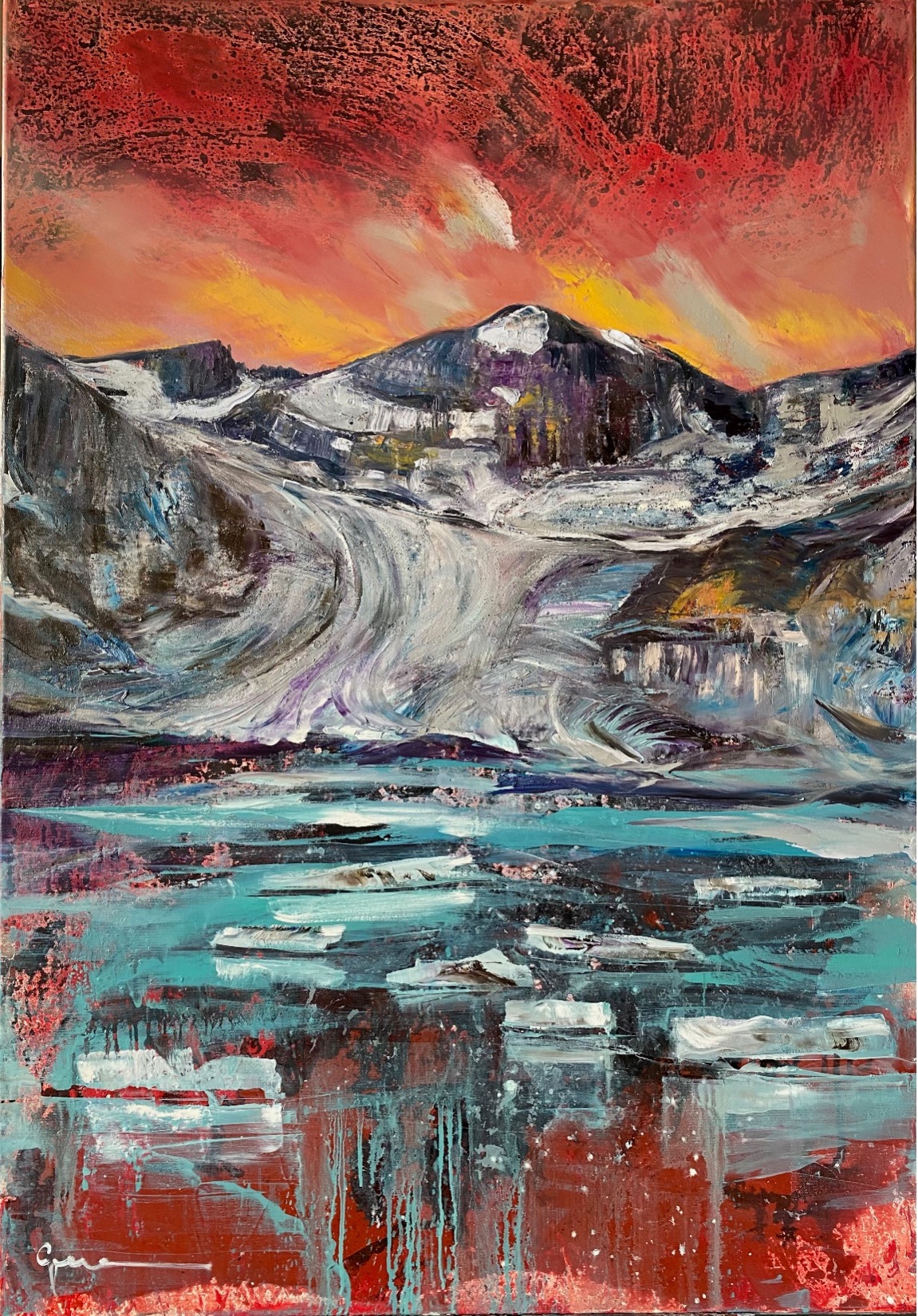John Pomeroy has been observing glaciers in the Rockies for decades — first as a young man, and now as a leading expert in the field. The changes he is seeing unfold before his eyes have left him weary, exhausted and tearful.

“I’ve been going to these glaciers since the late 1970s and the landscapes I remember from when I was younger are gone,” he says.
That sense of loss is increasingly present as the natural world changes with a rapidly warming planet.
This week, thousands of residents in British Columbia experienced first-hand the devastating loss caused by widespread flooding and landslides.
These changes, and the loss of property or life that often comes with them, are distressing and exhausting, and psychologists are noticing how that’s affecting mental health.
“You can mourn the loss of our environment and its destruction, and that loss is often painful and analogous to the grief from the loss of a loved one or grief from the loss of a pet,” he says.
“I have to admit I do have nightmares about this sometimes,” Pomeroy says of the Peyto glacier in the Rockies — his life’s work — literally disappearing before his eyes.
“We’re seeing … a loss of one’s personal heritage, the loss of one’s home, as well as the loss of the ecosystem, the loss of future water, and the threat to the planet.”
Different forms of ecological grief
Feelings of profound sadness associated with an immediate sense of loss — losing a home in a forest fire or a flood, for instance — are just one of the components of ecological grief.
But this form of grief takes on other forms as well, according to Olive Dempsey, a facilitator and coach who teaches on the subject.
It’s possible to “think about ecological grief in the context of folks whose ways of life are under threat,” Dempsey says.
That message of existential threat came from leaders of low-lying island nations at the recent COP26 climate conference in Scotland. Countries like Tuvalu or the Maldives are literally at risk of disappearing as sea levels rise.
Dempsey also describes a type of “anticipatory loss,” which is about grieving “what we thought our life might be, or grieving the loss of having a safe and reliable future for ourselves, for our children, for our grandchildren.”
One of the most common responses she hears is from people struggling with the decision to have children. There are also “lots of feelings of helplessness, feelings of anger and rage,” including, she says, the sense that elected officials are “not caring for us in the way that they need to be.”
Turning grief into action
But grief, along with fear, can and should be translated into concrete action, according to Sherry. The challenge, he says, is not to let those negative emotions take hold.
“If you are passive and sedentary and ruminative, sitting on the couch and doing nothing is where your grief and anxiety and depression festers and grows,” he says. “The enormity of this problem is paralytic.”
Simple, everyday actions that convey an ecologically positive message can go a long way toward helping people break out of their grief, anxiety or fear, Sherry says.
Fear, often seen as a paralyzing emotion, can actually be quite mobilizing, Sherry says, when people have a sense that they can act upon that fear. “I would advise people to take specific, concrete, doable and local action, rather than being paralyzed and overwhelmed by uncertainty, denial or catastrophizing.”
Drawing on ‘community’
One of the most effective ways of breaking out of those cycles of cynicism, according to psychologists and facilitators, is to find other people with whom there is a sense of connection.
Dempsey, the engagement strategist and facilitator, points out that so much of the conversation around climate change has been grounded in the need for individual action, guilt and shame: flying less, eating less meat, driving less. The sense of connectedness, belonging and community — namely, shared goals and mutual interests — is easily overlooked.
Bolstering the sense of community is why Albertans Jodi Lammiman, a community educator, and Amy Spark, an environmental scientist, began Refugia Retreats. It’s an online space where like-minded individuals looking for “a refuge in the midst of upheaval” can come together to talk about their shared concerns and feelings, Spark says.
She’s found that evoking feelings of shared interests — for example, emphasizing a community’s shared love of the land, or for a body of water — is a powerful way of generating conversations around the climate crisis, and helping people deal with their grief.
“When it comes to … climate anxiety,” Spark says, “what you really need is a community to legitimize that, for you to say, ‘hey I experienced that as well.’”
Vancouver-based youth climate activist Sophia Yang found her community through fashion. No stranger to eco-anxiety herself, Yang decided that, instead of sitting around “feeling all this grief, doing nothing, the least I could do is talk to those around me or try to do something about it.”
And so she did.
Last year, Yang began a small startup called Threading Change to advocate for more environmentally conscious practices in the fast fashion industry. “One way that I dealt with my eco-anxiety is really to educate others about the impacts of fast fashion,” she said.
The power of art
Hydrologist John Pomeroy knows that just shovelling facts and figures about the climate crisis generally does not generate engagement.
“We have to communicate with people’s hearts as well as their heads,” he says.
Imbricating science with art is one way he’s discovered how to do that. He is working with a U.K.-based Russian artist called Gennadiy Ivanov who paints dramatic portraits of a landscape affected by climate change.
Dozens of other Canadian artists — novelists, painters and musicians — are turning to the power of their medium to connect audiences to the natural world, and the changes that are happening to it.
“The burned forests, the drought-ridden Prairies, the dry rivers, the flooded landscapes — all this is there to see,” Pomeroy says.
The paintings can be harrowing; Pomeroy says they capture the “collective nightmares of our civilization.” But, he adds, they inspire a sense of feeling at one with nature in ways that “a graph of temperatures going up over time” simply don’t.
The climate crisis can be depressing, but also mobilizing and generative. So much of dealing with the grief and anxiety associated with this existential threat depends on making meaning of one’s grief, acknowledging it, and not pushing it away, Dempsey says.
That’s because grief ultimately represents a profound connection to life, she says.
“We only grieve the things we love, we only grieve the things we feel deeply connected to.”












Comments